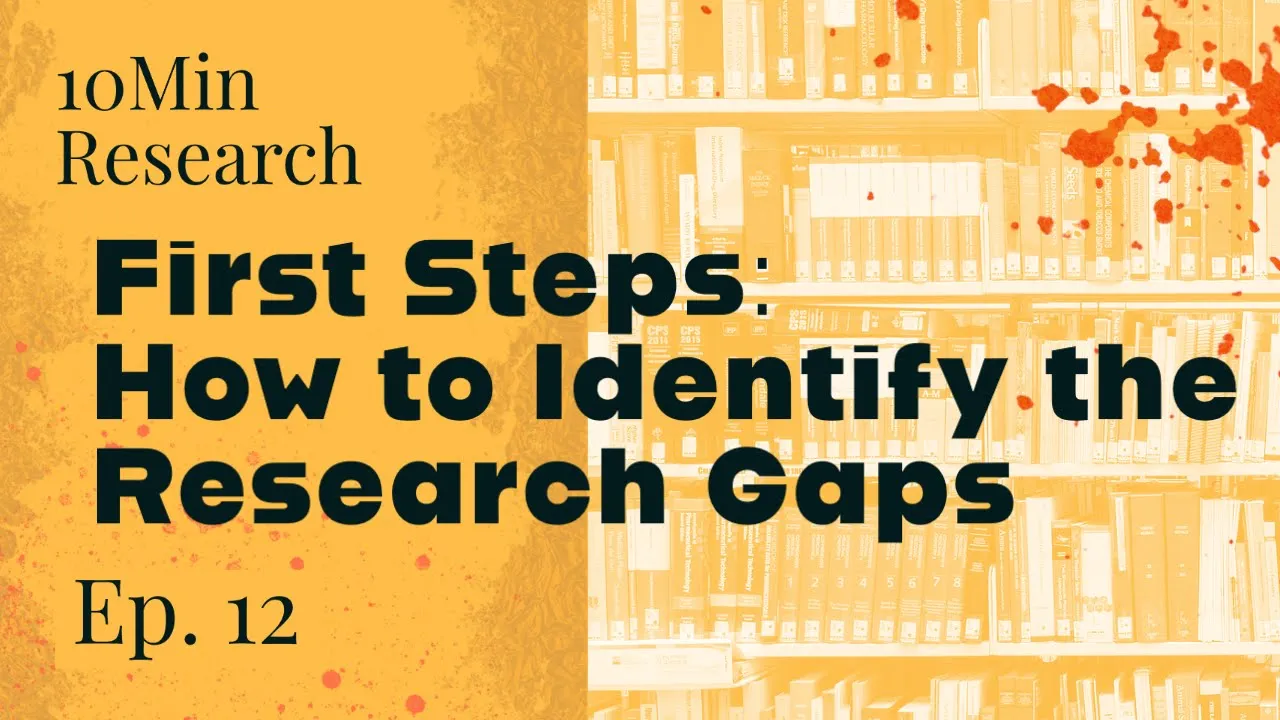Steps in Identifying the Research Gaps?
Introduction
Recent sessions have explored variables in depth in the context of research, going into the subtleties of variables including independent, dependent, mediating, and moderating variables. In the course of academic research, a crucial question arises: What are the first steps that one ought to take in order to effectively identify research gaps? The emphasis goes beyond understanding the subtleties of variables to include shrewdly navigating reliable sources and critically assessing the most recent research in the scholarly literature.

Learn the Steps to Identify the Research Gaps
The tutorial is a step by step guide on how to start the research process.
Last Lecture: Integrating Variables in a Framework
Do Like and Share the Video
Steps in Identifying Research Gaps
Navigating Research Gaps in the Study of Servant Leadership
In recent sessions, we delved into the intricacies of variables, focusing on the essential concepts of independent, dependent, mediating, and moderating variables. For the purpose of our exploration, we identified servant leadership as a key variable within the realm of human resource management, specifically examining its effectiveness within organizations.
Identifying the Research Landscape
With servant leadership as our chosen variable, the natural progression leads us to the critical question of where to proceed. Do we explore other variables influencing servant leadership, examine how it impacts another variable, or consider if its influence is moderated by additional variables? To determine the next steps in our research journey, the initial focus lies in uncovering the latest research on servant leadership.
Navigating Quality Sources
Not all sources are created equal, and discerning the reliability of journals is imperative. Reputable databases such as Social Sciences Citation Index, Master Journalist, and Scopus house journals of high quality. Notable databases in social sciences include Emerald, Sage, Springer, Science Direct, Elsevier, Wiley, Taylor and Francis, Oxford, and Cambridge. By ensuring a journal’s inclusion in these databases, researchers can establish the credibility of their chosen sources.
Conducting Targeted Searches
In the pursuit of the latest research, conducting a thorough search on servant leadership is paramount. However, not all papers are equally relevant; considering the publication date is crucial. Given that outdated research may not uncover new gaps, a focus on recent publications, such as those from the year 2022, ensures a contemporary perspective.
Analyzing Quantitative Research
For our exploration, we center on quantitative research, discernable through keywords like ‘variable,’ ‘moderating role,’ ‘influence,’ ‘impact,’ and explicit mentions of empirical methodologies. In quantitative research, responses are represented numerically, typically gathered through structured questionnaires. As we analyze papers, a keen eye for research frameworks, including hypotheses and relationships between variables, becomes instrumental.
Uncovering New Variables
To identify potential variables for our study, we scrutinize papers for the aforementioned keywords and delve into research frameworks. These frameworks often feature hypotheses, single-headed arrows denoting relationships, and an intricate interplay of variables. By understanding the existing models, we lay the groundwork for our next steps in model development.
We will examine the different aspects of incorporating variables into pre-existing models and investigate the possibility of creating a custom model using information from related research papers in our next sessions. Keep an eye out as we explore the model development.
Next Session: How to design an Original Research Model/Framework
Video:
Additional Resources
- An Introduction to Resarch
- APA Citation Generator
- Concept of Mediating Variable
- Constructing a Research Model: Integrating Variables for a Conceptual Framework
- Difference between Mediator and Moderator
- How to Find a Journal using Master Journal List?
- How to Start the Research?
- Understanding the Concept of Variables
- What is a Moderating Variable?